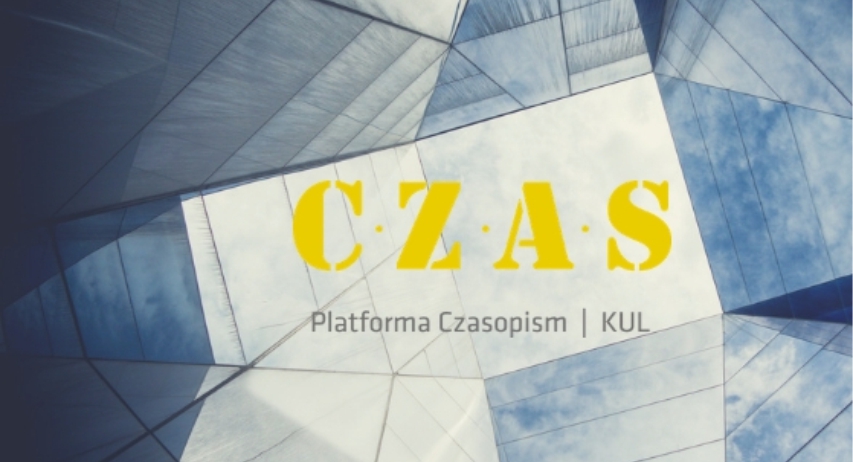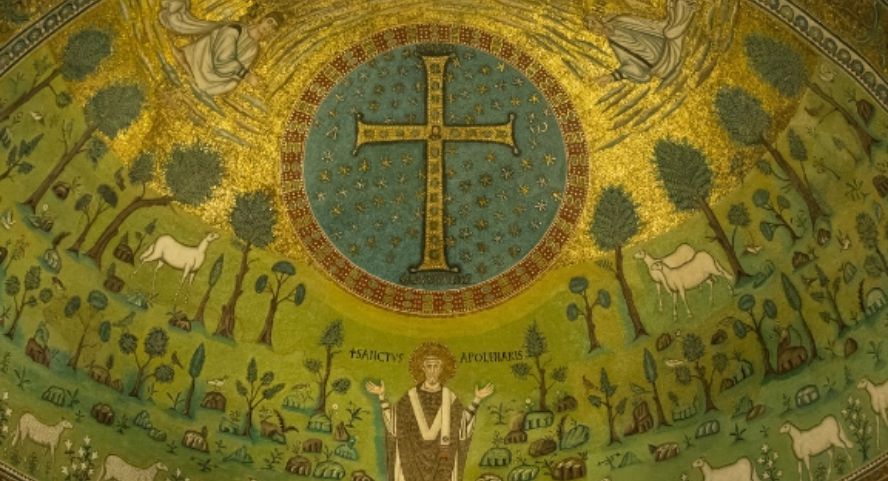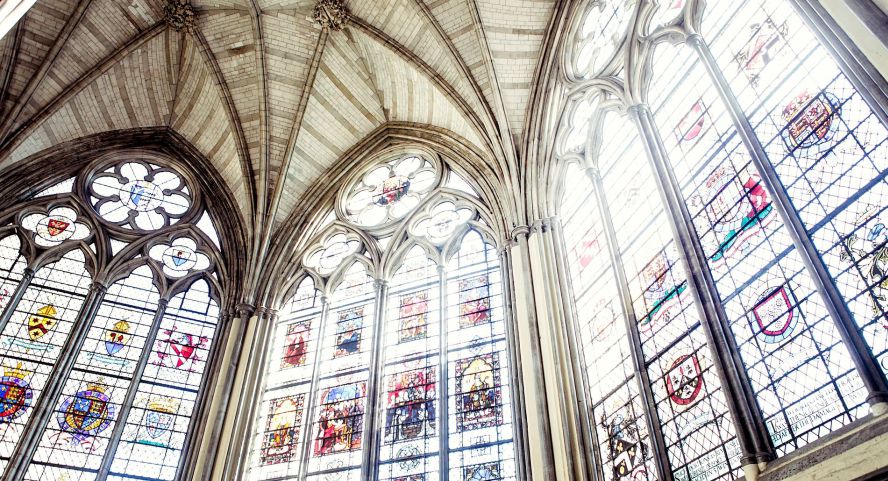Parrot Motif in the Mosaic Decoration of the Church of the Apostles in Madaba (578‑579)
Anna Głowa
John Paul II Catholic University of Lublin , Polandhttps://orcid.org/0000-0002-0478-7563
Abstract
A parrot is one of the most frequently depicted birds in Roman and Late Antique art and it becomes particularly popular in the fifth to sixth centuries in the area of Syro-Palestine. In the Church of the Holy Apostles in Madaba from 578-579, dozens of representations of parrots create a pattern covering the surface of the mosaic floor in the nave, with a medallion depicting the personification of the sea, Thalassa, in the centre. The article attempts to answer the question of the significance of the parrot motif in this particular church and the reason for its popularity in Late Antique art in general. The first part of the article presents parallels for a composition based on the recurring parrot motif found in houses, synagogues and churches in the period under discussion. The second part of the article analyses the written sources relating to this bird, as well as its earlier representations in Greco-Roman art, which allows to understand the network of associations that the parrot evoked. On this basis, it is possible to conclude that the parrot was an integral part of a visual language expressing concepts related to prosperity, the richness of nature and its cyclical rebirth, 'paradisiacal' gardens, and bliss. The contexts in which the parrot is mentioned in Christian texts suggest that it may have been part of iconographic programmes proclaiming the praise of the created world and the power of the Creator.
Keywords:
parrot, Late Antique mosaics, church of the Apostles in MadabaReferences
Aelianus Praenestinus, De natura animalium, w: Aelian, On Animals, v. 3: Books 12-17, ed. A.F. Scholfield, Loeb Classical Library 449, Cambridge 1959.
Ambrosius Mediolanensis, Exaemeron, red. C. Schenkl, CSEL 32/1, Vindobonae 1897, s. 3-261.
Anthologia Palatina, w: The Greek Anthology, v. 3/9: The Declamatory Epigrams, ed. W.R. Paton, Loeb Classical Library 84, Cambridge 1917.
Apuleius, Florida, w: The Apologia and Florida of Apuleius of Madaura, tł. H.E. Butler, Oxford 1909.
Aristoteles, Historia animalium, w: Aristotle, Historia animalium, ed. A.L. Peck, Loeb Classical Library 43, Cambridge 1965.
Augustinus Hipponensis, Enarrationes in Psalmos, ed. E. Dekkers – J. Fraipont, CCL 40, Tournhout 1956.
Achilleus Tatios, De Clitophontis et Leucippes amoribus, w: Achilles Tatius, Leucippe and Clitophon, ed. S. Gaselee, Loeb Classical Library 45, Cambridge 1969.
Artemidorus Ephesius, Oneirocritica, w: Artemidori Daldiani Onirocriticon Libri V, ed. R.A. Pack, Leipzig 1963.
Athenaeus Naucratita, Deipnosophistae, w: Athenaei Naucratitae Dipnosophistarum libri XV, ed. G. Kaibel, Lipsiae 1887.
Ctesias, Indica, w: Ctesias, On India, and Fragments of His Minor Works, tł. A. Nichols, London 2011.
Cyranides, tł. E. Żybert, Kyranides. O magicznych właściwościach roślin, zwierząt i kamieni, Wrocław 2013.
Dionysius Periegetes, De avibus, w: Paraphrasis Dionysii poematis de aucupio, ed. A Garzya, „Byzantion” 25-27 (1955-1957) s. 195-240.
Gaius Plinius Caecilius Minor, Epistulae, w: Pliny the Younger, Letters, Volume I: Books 1-7, ed. B. Radice, Loeb Classical Library 55, Cambridge 1969.
Ioannes Chrysostomus, In Acta apostolorum homiliae, PG 60, 13-384.
Isidorus Hispalensis, Etymologiarum Sive Originum Libri XX, ed. W.M. Lindsay, Oxford 1911.
Lucius Flavius Arrianus, Indica, w: Arrian, Anabasis of Alexander, Books 5-7. Indica, ed. P.A. Brunt, Loeb Classical Library 269, Cambridge 1983.
Marcus Valerius Martialis, Epigrammata, w: Martial, Epigrams, Volume III: Books 11-14, ed. D.R. Shackleton, Loeb Classical Library 480, Cambridge 1993.
Oppianus, Cynegetica, w: Oppian, Colluthus, Tryphiodorus, tł. A.W. Mair, Loeb Classical Library 219, Cambridge 1928.
Pausanias, Graeciae descriptio, w: Pausanias, Description of Greece, Volume I: Books 1-2 (Attica and Corinth), ed. W.H.S. Jones, Loeb Classical Library 93, Cambridge 1918.
Philo Alexandrinus, De animalibus, w: Philonis Alexandrini De animalibus: the Armenian text, with an introduction, translation, and commentary, ed. A. Terian, Chico 1981.
Physiologus, tł. K. Jażdżewska, Fizjolog, Warszawa 2003.
Publius Ovidius Naso, Amores, w: Ovid, Heroides. Amores, ed. G. Showerman, Loeb Classical Library 41, Cambridge 1914.
Publius Papinius Statius, Silvae, w: Statius, Silvae, ed. D.R. Shackleton Bailey, Loeb Classical Library 206, Cambridge 2015.
Severianus Gabalensis, De mundi creatione, PG 56, 429-500.
Caius Iulius Solinus, Memorabilia, w: Caius Iulius Solinus, Collectanea rerum memorabilium, ed. T. Mommsen, Berlin 1895.
Arnott B., Birds in the Ancient World from A to Z, London 2007.
Boehrer B.T., Parrot Culture: Our 25-Year-Long Fascination with the World’s Most Talkative Bird, Philadelphia 2010.
Cahn H.A., Thalassa, w: Lexicon Iconographicum Mythologiae Classicae, t. 8/1, Zurich – München 1997, s. 1198-1199.
Dauphin C., Mosaic Pavements as an Index of Prosperity and Fashion, „The Journal of the Council for British Research in the Levant” 12 (1980) s. 112-134.
Dauphin C., Carpets of Stone: The Graeco-Roman Legacy in the Levant, „Classics Ireland” 4 (1997) s. 1-32.
Doncel-Voûte P., Les pavements des églises byzantines de Syrie et du Liban, Louvain-la-Neuve 1988.
Dresken-Weiland J., Die frühchristlichen Mosaiken von Ravenna, Regensburg 2015.
Dronke P., Imagination in the Late Pagan and Early Christian World: The First Nine Centuries AD, Florence 2003.
Esbroeck M. van, The Memra on the parrot by Isaac of Antioch, „The Journal of Theological Studies” 47 (1996) s. 464-476.
Gonosova A., The formation and sources of early Byzantine floral semis and floral diaper patterns reexamined, „Dumbarton Oaks Papers” 41 (1987) s. 227-237.
Habas L., The Mosaic Floors of the House of Kyrios Leontis in Nysa Scythopolis (Beth Shean), „Journal of Mosaic Research” 14 (2021) s. 169-197.
Harrison T., History of Madaba, w: Madaba: Ciltural Heritage, red. P. Maynor Bikai – T.A. Dailey, Amman 1996, s. 1-17.
Henderson P., The Christian Mosaics of Byzantine Palestine, t. 1-2, Canberra 1990.
Kitchen R.A. – Peers G., ‘The Bird Who Sang the Trisagion’ of Isaac of Antioch, Cham 2024.
Kitzinger E., Studies on Late Antique and Early Byzantine Floor Mosaics: I. Mosaics at Nikopolis, „Dumbarton Oaks Papers” 6 (1951) s. 83-122.
Kondoleon C., Antioch: The Lost Ancient City, Princeton 2001.
Leatherbury S.V., Inscribing Faith in Late Antiquity: Between Reading and Seeing, London – New York 2020.
Levi D., Antioch mosaic pavements, Princeton 1947.
Lux U., Die Apostel-Kirche in Mādeba, „Zeitschrift des Deutschen Palästina-Vereins” 84 (1968) s. 106-129.
Maguire H., Earth and ocean: the terrestrial world in early Byzantine art, London 1987.
Noth M., Die Mosaikinschriften der Apostel-Kirche in Mādeba, „Zeitschrift des Deutschen Palästina-Vereins” 84 (1968) s. 130-142.
Piccirillo M., Madaba: le chiese e i mosaici, Milano 1989.
Piccirillo M., I mosaici di Giordania dal I all’VIII secolo d.C., Spilimbergo 1990.
Piccirillo M., Madaba, w: The Oxford Encyclopedia of Archaeology in the Near East, t. 3, red. E.M. Meyers, Oxford 1997, s. 393-397.
Piccirillo M., Arabia cristiana. Dalla provincia imperiale al primo periodo islamico, Milano 2002.
Rice E.E., The grand procession of Ptolemy Philadelphus, Oxford – New York 1983.
Szastyńska-Siemion A., A parrot hails the Emperor, w: Birthday beasts’ book: where human roads Cross Animal Trails… Cultural Studies in Honour of Jerzy Axer, red. K. Marciniak, Warszawa 2011, s. 415-442.
Spiro M., Critical Corpus of the Mosaic Pavements on the Greek Mainland, Fourth-Sixth Centuries, with Architectural Surveys, Michigan 1978.
Stillwell R., Antioch on-the-Orontes: the excavations 1933-1936, t. 2. Princeton 1938.
Tammisto A., Birds in Mosaics: A Study on the Representation of Birds in Hellenistic and Romano-Campanian Tessellated Mosaics to the Early Augustan Age, Rome 1997.
Wages S.M., A Note on the Dumbarton Oaks „Tethys Mosaic”, „Dumbarton Oaks Papers” 40 (1986) s. 124-128.
Wilber D.N., Iranian Motifs in Syrian Art, „Bulletin of the American Institute for Iranian Art and Archeology” 5 (1937) s. 22-26.
John Paul II Catholic University of Lublin https://orcid.org/0000-0002-0478-7563
License

This work is licensed under a Creative Commons Attribution-NoDerivatives 4.0 International License.
Papers published in Vox Patrum are covered by the Attribution-NoDerivatives 4.0 International (CC BY-ND 4.0) licence. Authors and users can use published works licensed under the CC-BY-ND since 2018. For earlier publications, copyrights are available under fair use rights in accordance with the Act of February 4, 1994 on copyrights and related rights.







